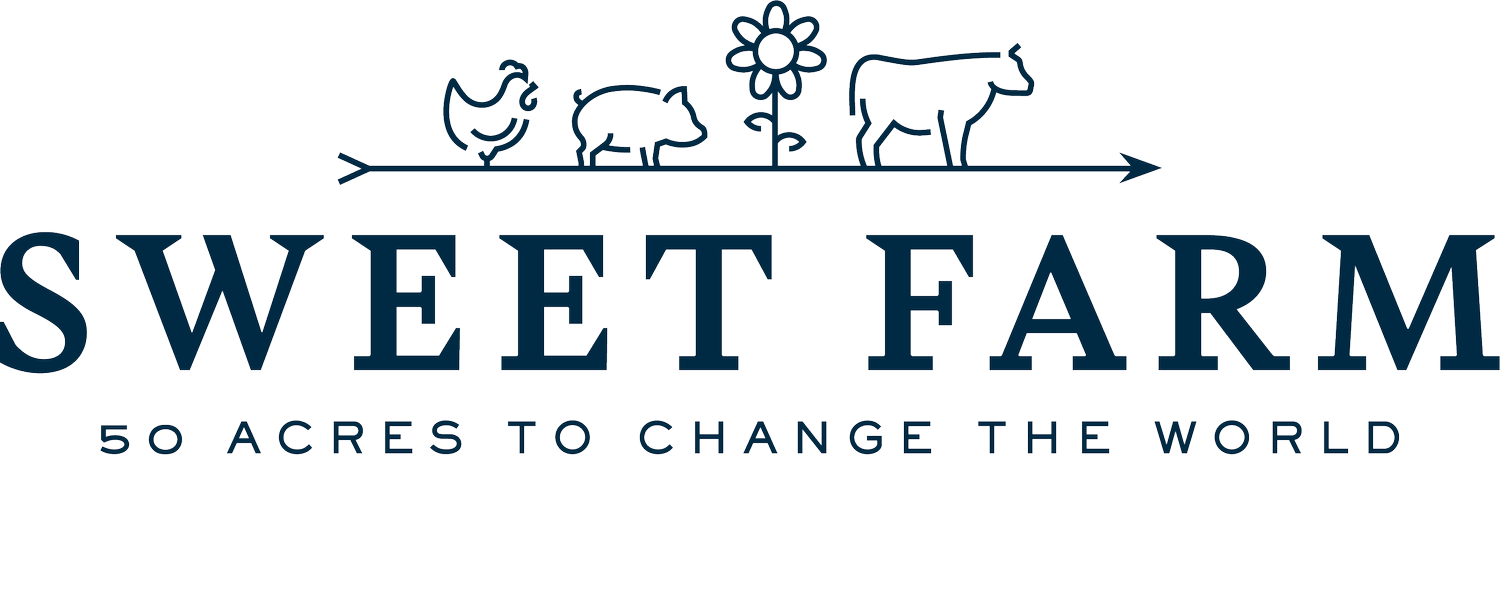January in the Garden: Long Thyme No See
Sweet Farm was originally founded in 2016, beginning it's life as a farm animal sanctuary. But it became clear almost immediately that our food and climate systems are so deeply intertwined that it was impossible to tell just one part of the story. To really create change, we realized it was essential to include other important pieces of the puzzle, and by 2017, the Regenerative Agriculture program was born. For those of you who have visited the farm in person, you've seen our fields of flowers and veggies, grown in a way that gives back to the soil and the planet. Starting this month, we'll be sharing monthly updates with our supporters, near and far, on what we're growing, how we're growing it and what you can do at your own homes to create positive change through gardening.
But it's Winter!
If you live in the Northern Hemisphere, you are probably thinking to yourself -- what's there to do in the garden during winter? The answer is plenty! Starting with the basics, you need to find out your growing zone, which will inform you what plants can grow in your region. Even experienced gardeners should be doing this, because for the first time in over a decade the USDA has updated it's growing zone map due to increasing temperatures caused by climate change.
With our proximity to Seneca Lake, Sweet Farm is in Zone 6b, which gives us an expected winter low temperature of -5 degrees Farenheit (brrrr!). With an expected last frost date of mid-May, that means we start a lot of our flowers and veggies in a greenhouse during the late winter to get the off to a strong start and extend our growing season.
That makes January seed shopping time and one of our favorite times of the year. At Sweet Farm we like to grow heirloom seeds that showcase the biodiversity of the amazing plants we eat. Did you know that there are over 10,000 types of tomatoes in the world? They come in all different shapes, sizes, and flavors. But more importantly, maintaining that biodiversity helps protect against the impacts of climate change, allowing plants to grow and adapt to changing conditions.
What's Going In Our Greenhouse?
This year we will have over 10,000 plant starts growing in the greenhouses. On the veggie side, we're trying out a bunch of weird tomatoes, a spectrum of peppers from sweet to spicy, new cucumbers (or as I like to call them - future pickles) and different colors of melons. For flowers, we'll be going big on flowers that can dried and enjoyed year round, like celosia, strawflowers and amaranth. If you are looking for places to find unique seeds, we recommend Baker Creek, Siskyou Seeds, Vintage Seeds and Wild Boar Farms.
January is also time to order early spring plants that go into the ground before or around your last frost. We recommend getting your orders in now for things like potatoes, onions, rhubarb, asparagus and berry plants. Check out the selections from Maine Potato Lady, Dixondale Farms and Nourse.
Plus An Exciting Announcement!
We're also very excited to share with you that in 2024 we will be offering our very own Sweet Farm Seeds! Keep an eye on our website as we start to roll out offerings of our favorite heirloom varieties, grown with love at Sweet Farm and shared with our community, with all proceeds going to support our nonprofit work.





